SUBJECTS
GRADE
Show Results
Multiplication and Division
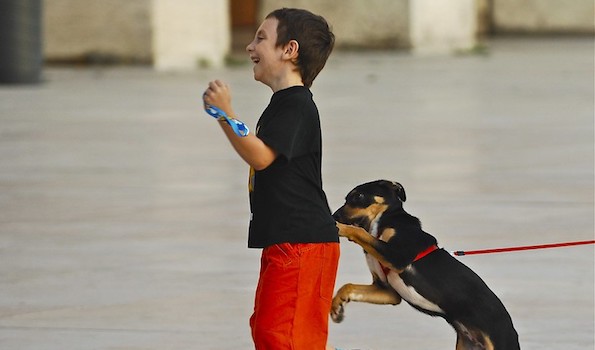
Lesson Summary
- Connect dance movements with numbers.
- Practice multiplying and dividing simple problems.
Lesson Plan and Procedure
Lesson Key Facts
- Grade(s): 3
- Subject(s): Dance, Math
- Duration of lesson: 30 minutes
- Author(s): Jana Shumway
Note: This lesson is intended to help solidify previously learned material, not to be a child’s first introduction to multiplication and division.
Experience/Identify
Place pictures of the numbers below and their descriptions in a visible place.
Go through each of these numbers with the movement until the students are fairly comfortable with the connection between the numbers and the movements.
Play the song “Rise” by Safri Duo while you teach and repeat the movements.
| Number | Movement | Picture |
|---|---|---|
| 0 | Fall down alone | 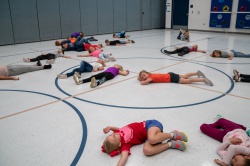 |
| 1 | Run alone | 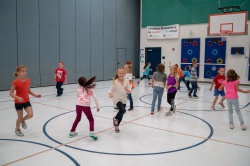 |
| 2 | Elbow swing with one partner | 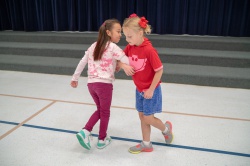 |
| 3 | Three people hold hands in a line walking forward |  |
| 4 | Walk in a circle with right arms up in the center of the circle, creating a star with four people | 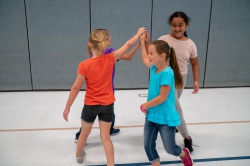 |
| 5 | Huddle in a group of five and bounce knees |  |
| 6 | Front-basket hold with six people walking forward (a front-basket hold is created by placing both arms in front of oneself in a line with other people—the right hand goes over the left arm of the person to the right and the left arm goes under the person to the left) | 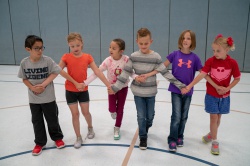 |
| 7 | Hold hands with seven people and walk in a curving pathway | 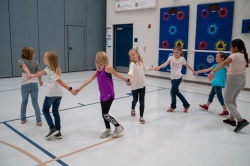 |
| 8 | Create a Texas star with eight people holding hands, with every other person is on the inside of the star | 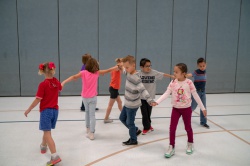 |
| 9 | Make a train with nine people by holding the shoulders of the person in front and travel in a curving pathway around the room | 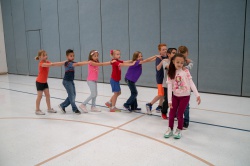 |
| 10 | Hold hands in a circle and walk around the circle without letting go | 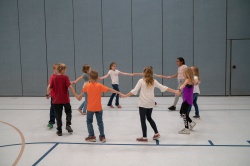 |
Explore/Investigate
Use the drum to give a starting signal, and then to accompany the students in the background while they figure out the answers to the problems.
Start calling out easy multiplication problems. They will show that they know the answer to the problem by performing the appropriate movement for the answer
Note: There will be remainders. Have the remainders make a personal shape that mimics the larger shapes performed by the groups. They usually get stuck there until the answer becomes zero again, but then they can be filtered back in.
| Examples of Easy Multiplication | Examples of Easy Division |
|---|---|
| 3 X 0 = 0 (fall down) | 9 / 3 = 3 (holding hands) |
| 4 X 2 = 8 (Texas star) | 3 / 3 = 1 (run) |
| 8 X 0 = 0 (fall down) | 8 / 1 = 8 (Texas star) |
| 1 X 5 = 5 (walking star) | 8 / 2 = 4 (walking star) |
| 5 X 2 = 10 (train) | 4 / 4 = 1 (run) |
Continue giving a variety of multiplication and division problems.
Increase the difficulty of the multiplication or division problems in subsequent lessons; for example, if the question is 5 X 5 = 25, have the students first do the dance of the first number and then the second number in double-digit multiplication. See above for the two (elbow swing with one partner for eight counts) and for the five (huddle in a group of five and bounce knees for eight counts).
Create/Perform
Divide the class in half. Have half of the class sit and the other half of the class stand up.
Give the standing students an extensive multiplication problem. When they figure out the answer to it, have them dance it. Make sure that those watching and those performing don’t say anything. The following is an example.
Teacher: 2 X 5. Think of that answer in your head. Now multiply it by 10. Take that answer and divide it by two. Then take that answer and divide it by 10. Without talking, show me the answer.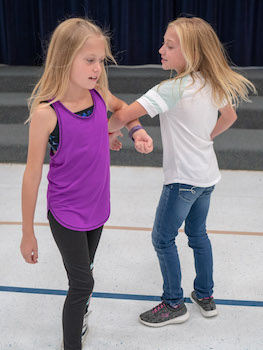
Repeat this for the other half of the class. Repeat activity as desired.
Connect/Analyze
Play the song “Rise” in the background as the partnerships talk to each other.
Have the students identify which of the numbers are the easiest to multiply and divide (possibly ten and two).
Have them share with a partner what makes those numbers easy to remember and what strategies they use to remember the answers to those numbers.
If there is enough time, have the partnerships share ideas on how to remember the answers to the tricky multiplication problems.
Learning Objectives
- Solve a variety of multiplication problems.
- Solve a variety of division problems.
- Dance with a partner or groups in a cooperative fashion.
- Dance with a group in close, far, and mid-range proximity.
- Recall movement sequences.
Utah State Board of Education Standards
This lesson can be used to meet standards in many grades and subject areas. We will highlight one grade’s standards to give an example of application.
Grade 3 Math
- Strand: OPERATIONS AND ALGEBRAIC THINKING (3.OA)
Represent and solve problems involving multiplication and division within 100 (Standards 3.OA.1-4 and Standard 3.OA.7).
Grade 3 Dance
- Standard 3.D.P.1: Cooperate with a partner or other dancers to safely change levels, directions, and pathway designs in near-,mid-, and far-range movement.
- Standard 3.D.P.7: Recall movement sequences with a partner or in group dance activities.
Equipment and Materials Needed
- Visuals of each number and a picture of the corresponding movement
- Music track: “Rise” by Safri Duo
- Drum
Additional Resources
ignore
Image References
Image 1-13: Jana Shumway

www.education.byu.edu/arts/lessons
 Download
Download